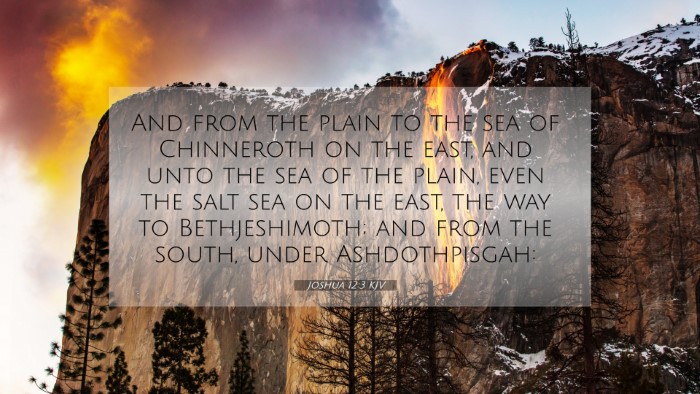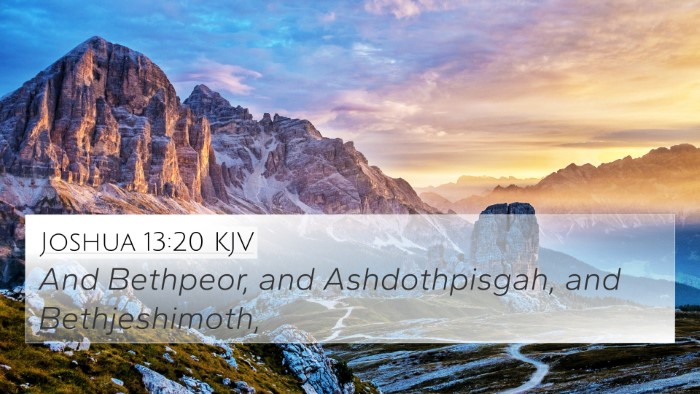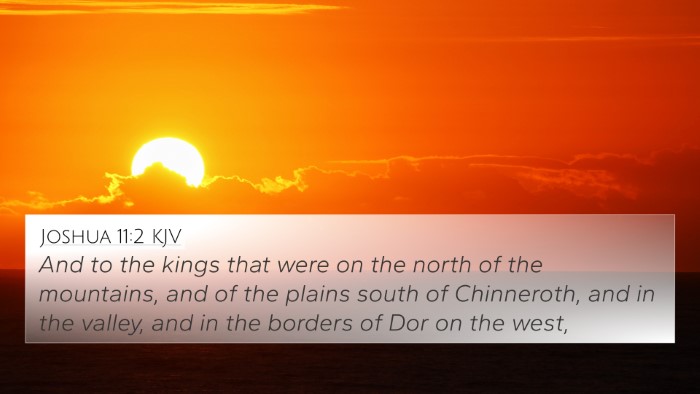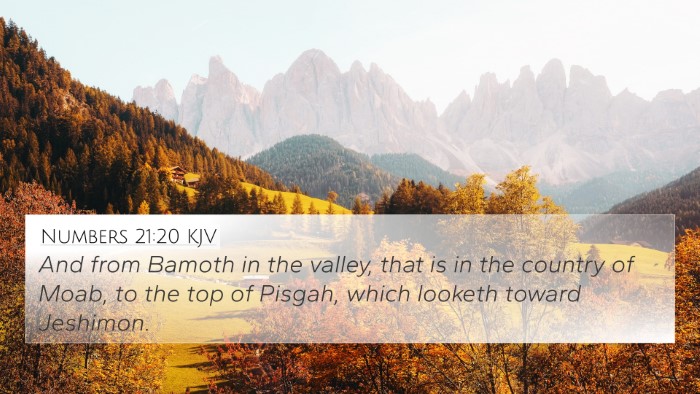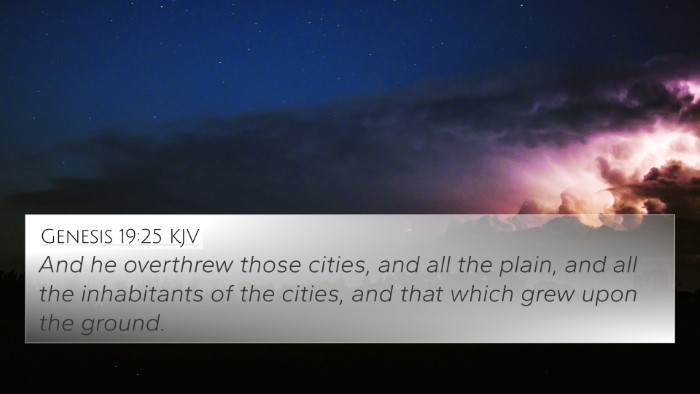Understanding Joshua 12:3
Joshua 12:3 states: "And half Gilead, and all Bashan, which was called the land of giants." This verse encapsulates an important historical moment in the conquest of Canaan, signifying the territories conquered by the Israelites under Joshua's leadership. It serves as a reminder of God’s faithfulness in providing these lands to His people.
Commentary Insights
- Matthew Henry: Henry emphasizes the significance of the geographical and historical context, noting that the territories mentioned were critical in securing Israel's foothold in the Promised Land. He underscores that the mention of 'giants' points to the formidable nature of the inhabitants, showcasing God's power in delivering victory despite obstacles.
- Albert Barnes: Barnes offers insights into the characteristics of the terrain known as Bashan, describing it as a land lush with cattle and thus, an area of abundance and fertility. He also highlights the importance of this land regarding future distributions among the tribes of Israel.
- Adam Clarke: Clarke discusses the implications of Gilead and Bashan being referred to as 'the land of giants', suggesting it was a formidable challenge for the Israelites. He also notes the historic context of these settlements and their importance in the narrative of the Israelite’s journey and conquest.
Major Themes and Connections
The themes present in Joshua 12:3 illustrate God's promise and the fulfillment of His covenant with Israel. The land, previously occupied by giants, symbolizes not only physical territory but also spiritual victory over seemingly insurmountable challenges. This leads to comparative Bible verse analysis with other significant passages in Scripture.
Cross-References
- Genesis 14:5-6: References the Rephaim, giants in the land, connecting the historical context of Israel's conquests.
- Deuteronomy 3:11: Mentions King Og of Bashan, emphasizing the significance of defeating such formidable foes.
- Numbers 21:33-35: Discusses the conquest of Bashan and the utter destruction of its kings, reinforcing God's power.
- Deuteronomy 3:13: Highlights the allocation of the conquered lands among the Israelite tribes, showcasing God’s provision.
- Joshua 13:11-12: Reiterates the lands conquered and their importance in the inheritance of the tribes of Israel.
- Psalm 22:12: Uses imagery of bulls and lions, symbolizing strength against which the psalmist feels challenged, mirroring Israel’s trials.
- Isaiah 4:5: Speaks of the Lord's protection over the land, assuring believers of His continued guidance and support.
- Ezekiel 39:18: Prophecy regarding the judgment against the land and the restoration to God's people, linking to the territorial theme.
- Hebrews 11:30-31: Mentions the faith of the Israelites in the context of Jericho, providing insight into their overall journey.
- Romans 8:31: Affirms that if God is for us, who can be against us, resonating with the theme of overcoming challenges.
Thematic Connections and User Intent
In exploring the connections between Bible verses, believers can see how Joshua 12:3 fits into the larger narrative of God's promises, conquests, and the fulfillment of scripture. Understanding these connections can enhance sermon preparation, providing insights into how God’s triumph over adversity resonates throughout the Biblical text.
Utilizing Cross-Referencing Tools
To dive deeper into Bible verse connections, utilizing tools for Bible cross-referencing such as a Bible concordance or cross-reference guide can be very beneficial. These resources assist in how to use Bible cross-references effectively, identifying connections between Old and New Testament scripture, and facilitating a comprehensive Bible study.
Additionally, methods for a cross-referencing Bible study can be enriched through the use of comparative studies of parallel texts, detection of inter-Biblical dialogue, and thematic connections that illuminate the meaning of specific verses such as Joshua 12:3.
Conclusion
Through distributed learning of related Bible verses and themes, believers can cultivate a more profound understanding of the scriptural narrative. By linking Bible scriptures and exploring cross-referenced themes, the spiritual journey can be enriched, illuminating the many dimensions of faith and God’s promises throughout the Bible.


